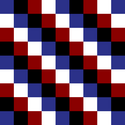Kasiiralq
| Kasiiralq Kasiiralqik hauq (Kasiirala) |
||||
|---|---|---|---|---|
|
||||
| Official languages | ||||
| Recognised regional languages | ||||
| Ethnic groups (2020) | ||||
| Demonym | Kasiiralqi | |||
| Government | Federal parliamentary republic | |||
| - | President | Name Nameson | ||
| - | Upper house | Upper House | ||
| - | Lower house | Lower House | ||
| Formation | ||||
| Area | ||||
| - | Total | 2,009,578 km2 775,902 sq mi |
||
| Population | ||||
| - | 2020 census | 122,521 | ||
| - | Density | 0.06/km2 0.2/sq mi |
||
| GDP (PPP) | 2018 estimate | |||
| - | Total | $2.74 billion | ||
| - | Per capita | $22,344 | ||
| GDP (nominal) | 2017 estimate | |||
| - | Total | $2.26 billion | ||
| - | Per capita | $18,442 | ||
| Gini (2020) | 44 medium |
|||
| HDI (2020) | 0.796 high |
|||
| Time zone | SCT+08:00 to SCT+10:00 | |||
| Drives on the | right | |||
Kasiiralq (Kasiirala: Kasiiralqik hauq /kaˈsi:ralqik ˈhauq/) is a country located in Northern Miraria, largely over 60° with one small peninsula extending into the arctic circle. It shares land borders with Achiyitqana to the north, and Fazulavaz to the west and southwest, being otherwise surrounded by the northern reaches of the Asura.
Etymology
History
Geography
Geology
Climate
The country is principally subarctic, with tundra in the northeasternmost peninsula. As such, it experiences extremely long, cold winters. The majority of the country is naturally covered by taiga forests, with some tundra to the north.
Biodiversity
Politics
Government
Administrative divisions
Foreign relations
Military
Economy
Transport
Energy
Science and technology
Tourism
Demographics
Ethnic groups
There are six major human ethnic groups represented in the country. The largest group are the Tulipik, at nearly 28% of the country's populace.
Vodholk comprise the second most populous group at approximately 25% of the population, giving Kasiiralq the second highest per-capita number of vodholk on Sahar behind Oimia
Urbanisation
Language
The languages of Kasiiralq represent members of three primary language families: Maakpauean, Tulipi-Lakup and kamPatuk, in addition to two dialect clusters variously considered language isolates or small language families, Yucho and Vemkha.
The country has four official languages: Kasiirala, Tulipik, Yucho and Patuk, each representing one of the four major ethnic groups that founded the nation and who collectively make up at least 80% of the population. While each of these languages are equal under the law, with all official documents and national treaties translated into each of the four languages, Kasiirala remains the principal language for inter-ethnic communication, as well as official and international affairs. Kasiirala, a standardised form of the Itsivqutki language, is a Maakpauean language closely related to Achiyitqan and Siyatsiluq. It is the native language of the Itsivqutki ethnic group who represent approximately 17-18% of the population, although up to 70% of the population are able to understand it. Its use as a lingua franca emerged before the foundation of Kasiiralq, primarily due to the role of the Itsivqutki people in facilitating trade across the Bay of Kasiiralq. The largest language by native speakers alone is Tulipik, a member of the small Tulipi-Lakup family, which is primarily spoken on the south and west coasts of the Nequmlug peninsula. Its distant relative, Lakup, is spoken in the far east of the country by approximately two-thirds of the ethnic population of 2998, with the remainder largely having switched to Patuk. Various kamPatuk languages are spoken by members of the Vodholk species, primarily concentrated to the east coast of Nequmlug or to the inland regions. The largest of these is Patuk, followed by Tunguku and mPaku. Yucho is primarily spoken in the Yaru Islands province, with the exception of Enyet Yucho spoken by a few hundred speakers on the mainland. The largest language without official status is Vemkha, a language isolate spoken on the southern coast up to the border with Fazulavaz.
